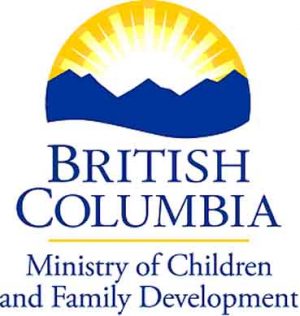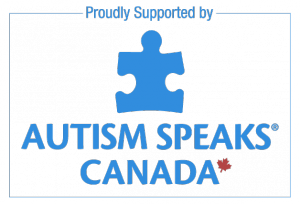Filmed November 2014 – edited into 15 parts; total 196 minutes
Research and Helping Families Build the “Team”
This video provides an overview of current best practice treatment approaches for children and youth with ASD. It also focuses on developing collaborative partnerships between behavior consultants, speech-language pathologists, occupational therapists and other professionals in order to enhance optimal outcomes for children with ASD and provide their families with meaningful support. Dr. Bopp has spent over 20 years in the autism field, as a clinician, researcher and in policy development. Topics include:
- Prevalence and the State of the Science
- Evidence-Based Practices: Key Elements
- Intervention Models
- What the Research Says
- Alternative and Complementary Treatments: What Do We Know?
- Making the Most of the Intervention Team
About the Presenter
Dr. Karen Bopp is an autism policy consultant for the Ministry of Children and Family Development (MCFD), Senior Behaviour Consultant for the provincial government of B.C., a researcher, and a registered Speech-Language Pathologist. At MCFD, she works in the Children and Youth with Diverse Needs Policy department and provides clinical and best practice consultation on autism service delivery and policy. Dr. Bopp has worked extensively with children with autism spectrum disorders and their families for over 20 years.
Part 1: Introduction and DSM-V (Prevalence and the State of the Science) (21:24)
Links to resources mentioned in this part:
Part 2: Prevalence of Autism (17:11)
Links to resources mentioned in this part:
Part 3: Evidence-Based Practices: Choosing an Intervention (11:08)
Part 4: Evidence-Based Practices: Key Elements (9:37)
Part 5: Evidence-Based Practices: Guidelines for Intervention (13:20)
Links to resources mentioned in this part:
- Video Clip: Temple Grandin at the Emmys
Part 6: Intervention Model: Applied Behavior Analytic Approaches (11:56)
Links to resources mentioned in this part:
- Video clip: Playing with Toys
- Video clip: ABA video
- Video clip: Autism Speaks ABA video
- Video clip: Discrete Trial Training from Autism Video Glossary
- ACT’s Autism Information Database: search for Positive Behavior Support
Part 7: Intervention Model: Developmental Social Pragmatic Approaches (5:04)
Links to resources mentioned in this part:
- Video Clip: Floortime model
- Website: ASD Video Glossary
Part 8: Intervention Model: Comprehensive or Combined Approach (7:11)
Links to resources mentioned in this part:
- Video clip: Pivotal Response Training
- Website: ASD Video Glossary
- Post-Secondary Training in BC
Part 9: What does the Research Say? (19:57)
Links to resources mentioned in this part:
- Website: National Autism Center National Standards Project
- Article: Wong et al., (2014) Evidence-Based Practices for Children, Youth, and Young Adults With Autism Spectrum Disorder
- Guide: Warren et al. (2011) Therapies for Children With Autism Spectrum Disorder
- Article: M. Maglione (2012) Nonmedical Interventions for Children With ASD: Recommended Guidelines and Further Research Needs
Part 10: Intro to Alternative and Complementary Treatments (9:47)
Links to resources mentioned in this part:
- Article: Lofthouse et al (2012) : A review of complementary and alternative treatments for autism spectrum disorders
- Article: J. Farrugi (2013) The use or misuse of biomedical treatment approaches to autism
Part 11: Some Specific Complementary and Alternative Treatments (17:30)
Part 12: Obesity, Exercise and Diet (14:17)
Links to resources mentioned in this part:
- Article: Zuckerman et al. (2014) : Overweight and Obesity: Prevalence and Correlates in a Large Clinical Sample of Children with Autism Spectrum Disorder
- Rosenblatt et al. (2011): Relaxation Response–Based Yoga Improves Functioning in Young Children with Autism: A Pilot Study
- Sowa & Meulebroek (2012): Effects of physical exercise on Autism Spectrum Disorders: A meta-analysis
- Article: Bahrami et al (2012) Kata techniques training consistently decreases stereotypy in children with autism spectrum disorder
- Canucks Autism Network (CAN)
- ACT’s Autism Information Database. Search for Recreational Activities
- Article: Buie,Timothy (2013) The Relationship of Autism and Gluten
Other Resources:
- Canucks Autism Network – sports, recreational, arts, and social programs for individuals and families living with autism.
Part 13: What to Consider with Complementary and Alternative Therapies (6:30)
Links to resources mentioned in this part:
- Website: Research Autism
- Search ACT’s Autism Information Database: www.actcommunity.ca/aid
Part 14: Making the Most of your Intervention Team: Hiring Team Members (21:09)
Links to resources mentioned in this part:
- Article: Makintosh et al. (2012) “What Do You Like/Dislike About the Treatments You’re Currently Using?”: A Qualitative Study of Parents of Children With Autism Spectrum Disorders
- Article: Cox, David (2012)From Interdisciplinary to Integrated Care of the Child with Autism: the Essential Role for a Code of Ethics
- HUB: Finding professionals
- HUB: Hiring or contracting with service provider
- Post-secondary training opportunities in B.C.
Part 15: Making the Most of your Intervention Team: Teamwork and Quality (10:12)
Additional resources:
This video sponsored by…





